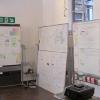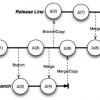Process
Articles
 |
From One Expert to Another: Simon Baker In this interview, author, speaker, and agile tester Lisa Crispin speaks with Simon Baker, cofounder of Energized Work and recipient of the Gordon Pask award, about the approaches and tools his lab uses. |
|
|
Continuous Integration and the Automated Database Update Process Developers must have good feedback to ensure productivity. Most shops have a continuous integration (CI) build process that allows the developer to quickly know if a build failed, and some shops have an automatic deploy of the CI build to provide website feedback. Lance Lyons writes about an approach to automating the update of databases in a CI environment. |
Lance Lyons
July 14, 2011 |
|
 |
Branching to Distraction Branching can be an effective solution for managing change, enabling parallel development and improved productivity. But, working on a branch is a distraction and can decrease agility, productivity, and code robustness. Learn when the value of working on a branch outweighs the cost. |
|
|
|
Four Agile Tips to Eliminate Rework in Application Development Your applications need to meet business needs, overcome complex processes, and provide instant results to customers. And, ideally, they’ll require minimal rework on your part. The first step to success is requirements definition. Here, Filip Szymanski offers some tips from agile methods that will improve your requirements—even if you haven’t otherwise adopted agile. |
|
|
Personality Factors That Influence Core Build and Release Management Practices Leslie Sachs discusses the key people skills essential to appreciating how and which personality factors most impact one's ability to successfully implement core build and release management practices. |
||
|
Getting Empirical about Refactoring Often when we refactor, we look at local areas of code. If we take a wider view, using information from our version control systems, we can get a better sense of the effects of our refactoring efforts. |
||
|
Agile vs. Waterfall: The Blue Ocean Explains Why Agile Wins The Blue Ocean Strategy gives important insights regarding how to create new market space in uncontested markets thereby making the competition irrelevant. This strategy can be adopted to explain the significance of agile methodologies as compared to the Waterfall method of software development. |
||
|
Using Lean-Agile to Provide the Real Value of ALM If Agile is going to make a difference to an organization, it must accomplish two things. First, it must assist us in being driven by business needs—not the development organization. Second, it must help us with the entire value stream—not merely part of it. Lean-agile practices presents us with an opportunity to reunite the business and software development organizations so our Application Lifecycle Management (ALM) can focus on value, not merely delivered software. |
||
|
Agile ALM—Opposites Attract Agile and ALM are two terms that you don’t often see side by side. To most developers, agile means team interaction, customer collaboration, dynamism, and responsiveness to change. In contrast, ALM seems to imply the opposite of agile, with echoes of rigid procedures, inflexibility, and top-down process control. But are the agile and ALM approaches as contradictory as they first appear to be? |
Mike Shepard
July 20, 2010 |
|
|
Exploring the Subtle Differences Between Agile Paradigms In recent years within the object oriented and agile community, several approaches to software design and development have materialized and are in use by professional software developers. Test-Driven Development (TDD), Domain-Driven Design (DDD), Behavior-Driven Design (BDD) and Feature-Driven Design (FDD) are some of the more well known approaches. While these philosophies all imbibe the classic agile principles of an incremental and iterative mindset to software development, they subtly differ from each other. |
Pages
Recommended Web Seminars
| May 23 | How Generative AI Boosts Speed and Quality in Software Testing |
| On Demand | Building Confidence in Your Automation |
| On Demand | Leveraging Open Source Tools for DevSecOps |
| On Demand | Five Reasons Why Agile Isn't Working |
| On Demand | Building a Stellar Team |










